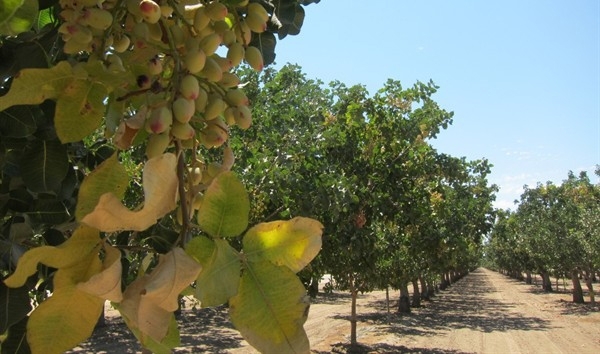Climate and California agriculture of the future
One of the forces driving agricultural experiments in California's fertile San Joaquin Valley is climate change, reported Mark Schapiro on Grist.org. Although some sources still don't feel completely comfortable with the concept.
"Whether it's carbon built up in the atmosphere or just friggin' bad luck, the conditions are straining us," said John Duarte, president of Duarte Nursery.
The state's fruit and nut orchards are taking the most heat as conditions change. A fruit or nut tree planted today may be ill-suited to climatic conditions by the time it begins bearing fruit in 5 or 10 years. Between 1950 and 2009, “chill” hours trees needed annually to reboot trees' metabolic system for the spring bloom had already declined by as much as 30 percent, according to a California Department of Food and Agriculture study.
“If trees haven't had that low-chill period when they wake up in the spring, it's like being up all night and then trying to go to work.” said Mae Culumber, a nut crop advisor with UC Cooperative Extension in Fresno County.
Researchers have already observed that cherry, apricot, pear, apple, pecan and almond trees are often less productive than they used to be.
The article said farmers may turn to pistachio trees to weather a warmer and dryer California. Pistachio trees require one-third to one-half as much water as almond trees. During droughts, pistachio tree metabolism slows and when water returns, they start producing nuts again. And they can produce nuts for 80 years or longer, almost four times the life span of an average almond tree.
For field crops, scientists are looking at improving the soil and transforming growing systems to help farmers adapt to the warming climate.
“When I drive to the Central Valley, I get goosebumps; I feel the urgency,” UC Davis agronomist Amélie Gaudin said. “I see an agriculture that is basically hydroponics. It's like a person being fed/kept alive by an IV.”
“What happens when you no longer have the sugar-water?” she adds.
Gaudin is focusing on using agroecological principles to develop efficient and resilient cropping systems. Planting cover crops and reducing tillage show promise for mitigating the impact of climate change in the valley.

